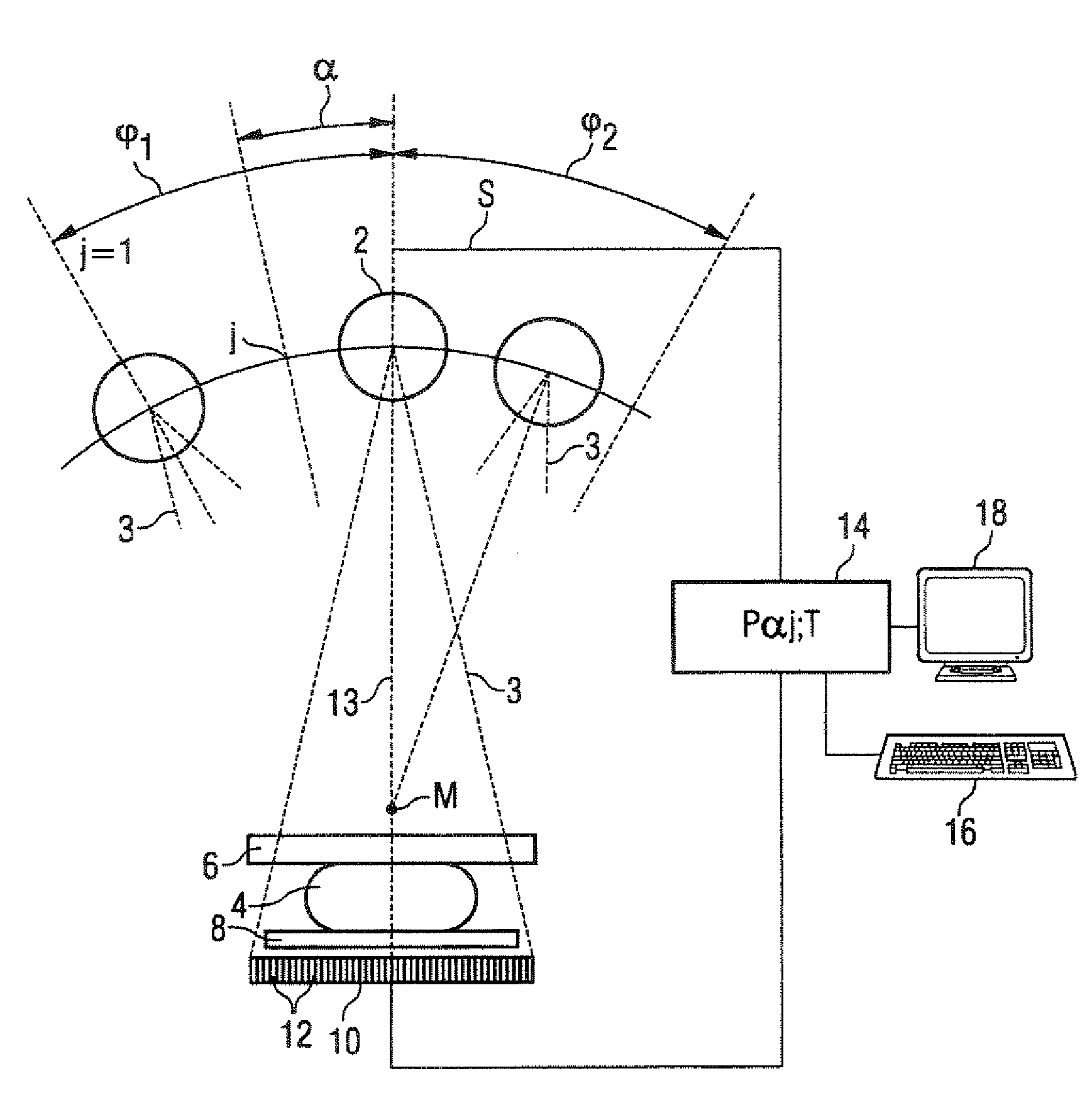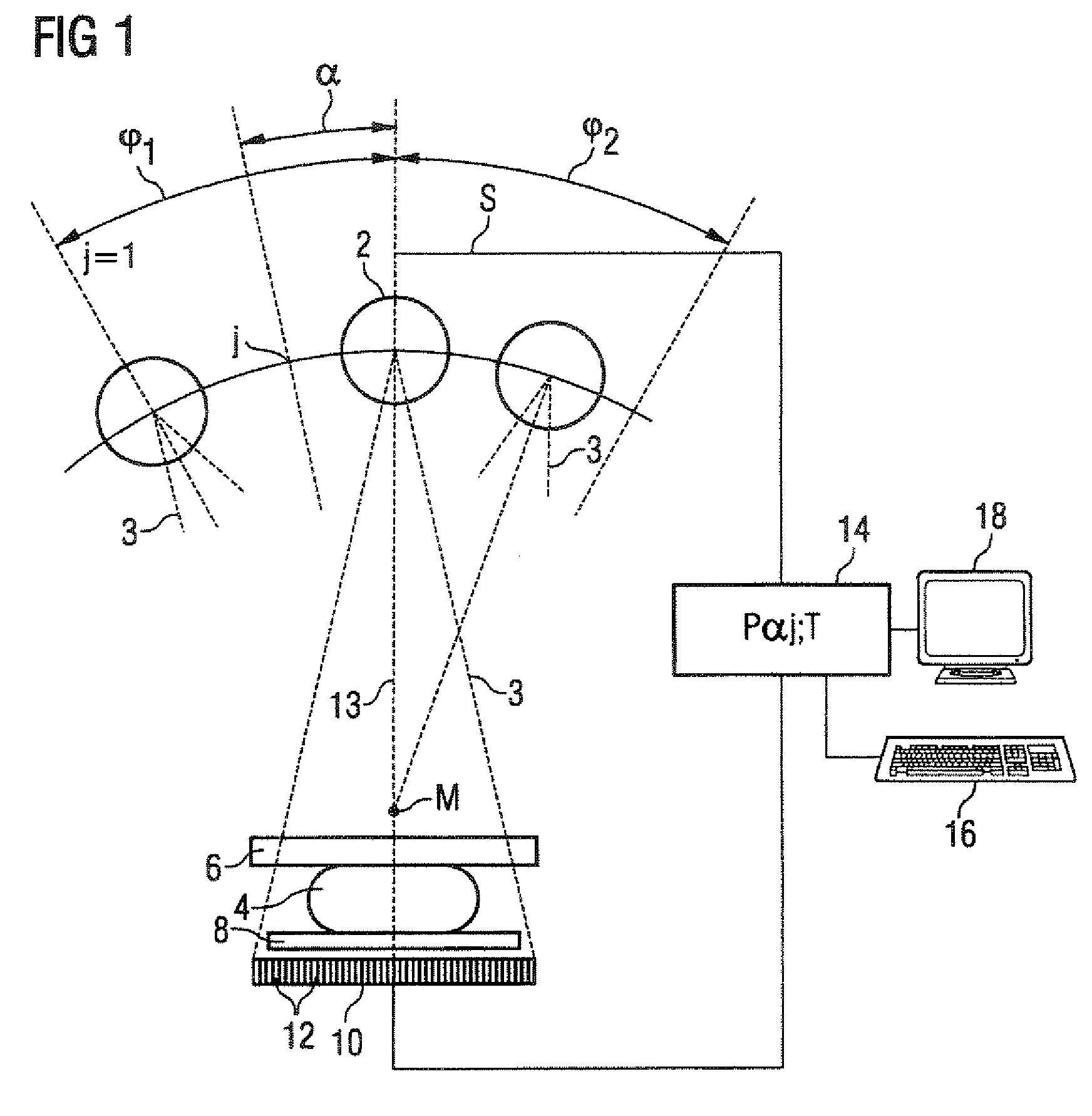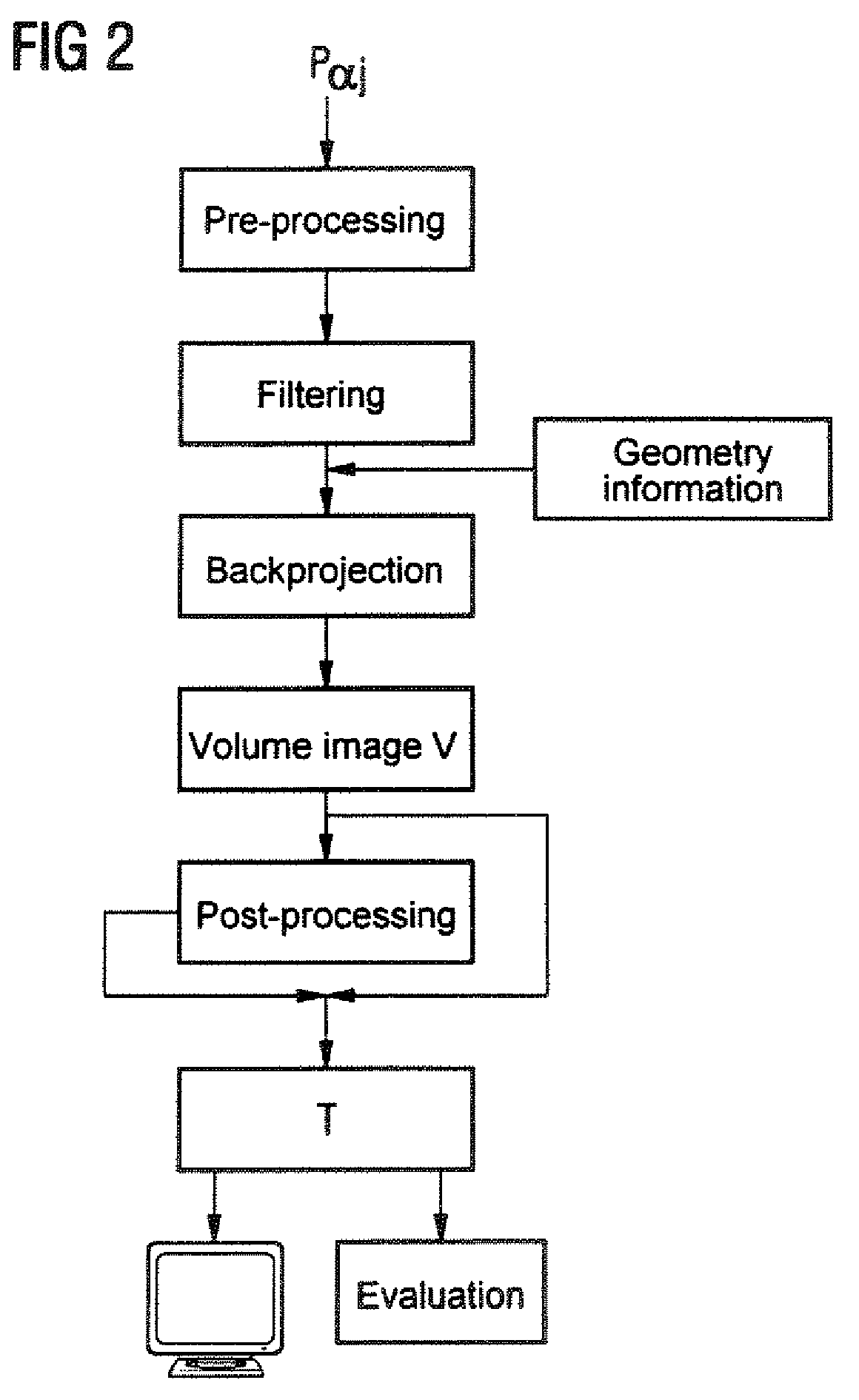Tomosynthetic image reconstruction method, and diagnostic device operating according to the method
a tomosynthetic and image reconstruction technology, applied in the field of tomosynthetic image reconstruction methods, can solve the problems of inability to simply use reconstruction algorithms, as are known from tomography, and inability to achieve the image quality of a tomosynthetic 3d x-ray image known from computed tomography (ct), so as to achieve the effect of minimal processing effor
- Summary
- Abstract
- Description
- Claims
- Application Information
AI Technical Summary
Benefits of technology
Problems solved by technology
Method used
Image
Examples
Embodiment Construction
[0039]According to FIG. 1 the device, in the exemplary embodiment a mammography device, has an x-ray tube 2 for generating x-rays beams 3 that pass through an object under examination 4. The object under examination 4 is a female breast which is held between a compression plate 6 and a support plate 8. The x-rays passing through the object under examination 4, the compression plate 6 and the support plate 8 are received by a wide-area digital x-ray detector 10 which is formed by a number of individual detectors 12 arranged in a matrix-shaped array, and of which the receive surface is arranged in parallel to the plates 6, 8.
[0040]The x-ray tube 2 is arranged to enable its location to be changed in a restricted area in relation to the object under examination, and can for example within a restricted angular range φ1,φ2 be pivoted around an axis M perpendicular to the beam plane into different angular positions j=1 . . . n, so that individual images of the object under examination 4 at...
PUM
 Login to View More
Login to View More Abstract
Description
Claims
Application Information
 Login to View More
Login to View More - R&D
- Intellectual Property
- Life Sciences
- Materials
- Tech Scout
- Unparalleled Data Quality
- Higher Quality Content
- 60% Fewer Hallucinations
Browse by: Latest US Patents, China's latest patents, Technical Efficacy Thesaurus, Application Domain, Technology Topic, Popular Technical Reports.
© 2025 PatSnap. All rights reserved.Legal|Privacy policy|Modern Slavery Act Transparency Statement|Sitemap|About US| Contact US: help@patsnap.com



